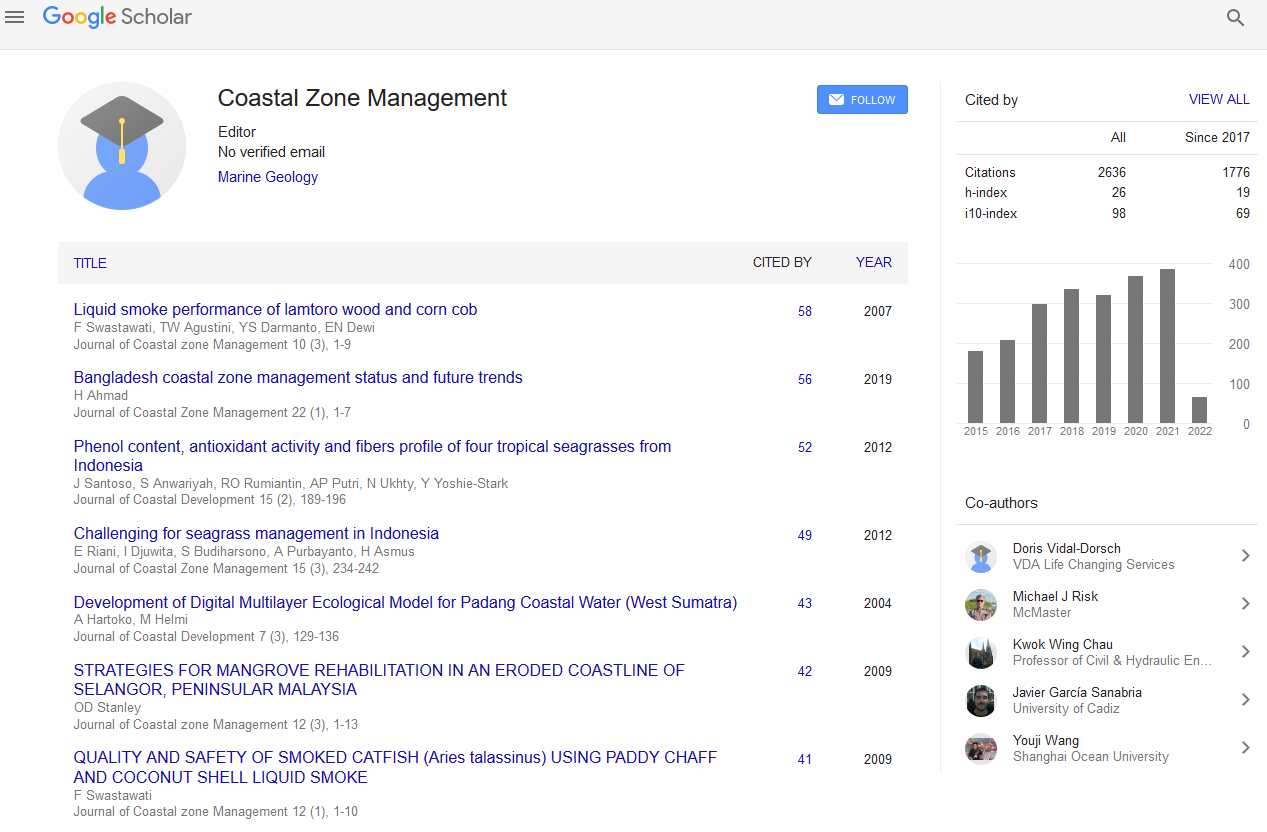Indexed In
- SafetyLit
- RefSeek
- Hamdard University
- EBSCO A-Z
- OCLC- WorldCat
- Publons
Useful Links
Share This Page
Journal Flyer

Open Access Journals
- Agri and Aquaculture
- Biochemistry
- Bioinformatics & Systems Biology
- Business & Management
- Chemistry
- Clinical Sciences
- Engineering
- Food & Nutrition
- General Science
- Genetics & Molecular Biology
- Immunology & Microbiology
- Medical Sciences
- Neuroscience & Psychology
- Nursing & Health Care
- Pharmaceutical Sciences
Abstract
Macrobenthic Community Structure as A Bio-Indicator for the Assessment of Coastal Water Pollution In Greater Noakhali-Bangladesh
Md. Jahangir Sarker, Mehedi Hasan Tanmay, Farhana Rahman, Md. Shamsul Alam Patwary and Nazmun Nahar Rima
Present study was aimed for the partial judgement of coastal water pollution and accordingly the abundance, diversity as well as the species composition of macrobenthic communities on the sediment of 3 selected stations were carried out following standard methods during January to March, 2015 in Noakhali, Bangladesh. 14 families under 4 major groups yielded a total of 5481 ind./m2 with a mean density of 609 ± 445 ind./m2 during the study. The highest and the lowest number of taxa were identified in January (10) and February (6) respectively during the study period. On the other hand, monthly diversity profile of microbenthic communities showed clear difference in the diversity of all stations which is compatible to the other published results of macrobenthic animal as well. Based on the calculated results from Shannon-Wiener index of microbenthic species diversity (H′), the present study might be considered as heavily polluted in February (H′ = 0.9202) and moderately polluted in January (H′ = 1.514) and in March (H′ = 1.571). On the other hand, The Margalef’s index of benthic macro-invertebrates at station S1 (0.4501) was lowest in February and at station S1 (1.096) was highest. Therefore, the research output revealed that the abundance and diversity of macrobenthic animal community might be good indicators to assess the aquatic environmental pollution as the selected study area fall under the category of more or less polluted.

